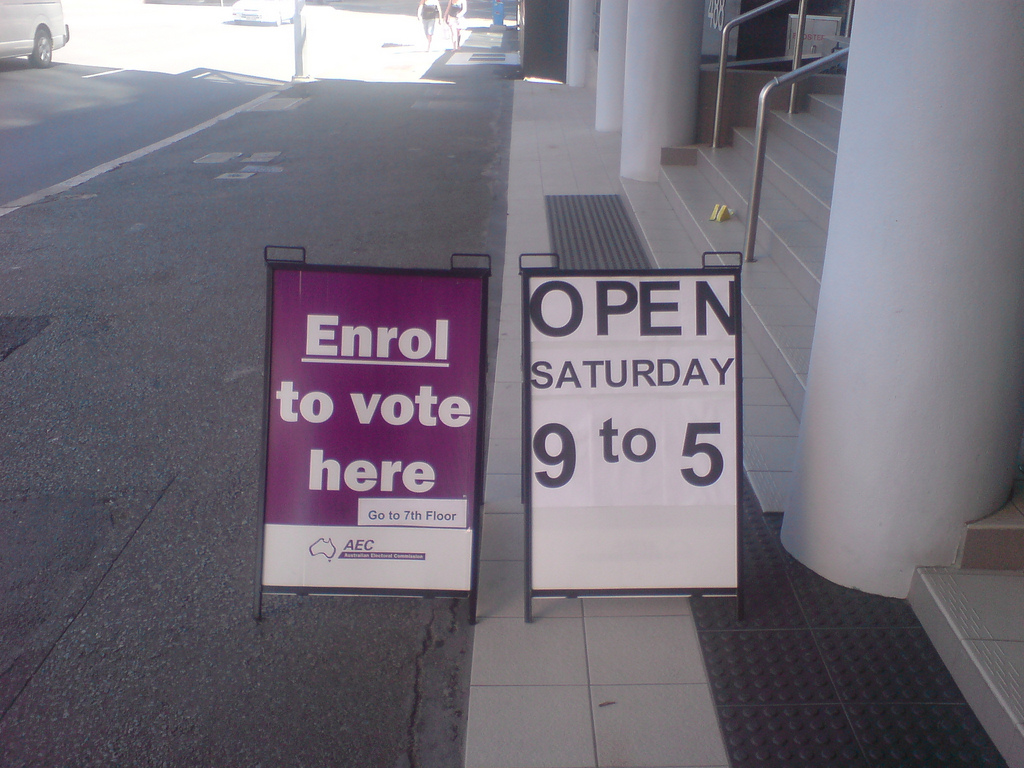The prospect of online and electronic voting at Australian federal elections has officially had its plug pulled for the foreseeable future.
The Parliamentary Committee tasked with investigating the feasibility of digitising Australian ballots has unanimously found that a high-tech solution is still too risky, complicated and expensive to make it a reality in the near term.
The probe came after the now infamous Western Australian vote counting bungle that forced the state back to the polls after ballot papers were somehow mislaid.
Now in a second interim report issued by the Electoral Matters Committee, federal politicians have concluded that although there is a raft of technological improvements that could be made to the running of elections, a fully digitised solution is still a long way off.
“After hearing from a range of experts, and surveying the international electoral landscapes it is clear to me that Australia is not in a position to introduce any large – scale system of electronic voting in the near future without catastrophically compromising our electoral integrity,” said the Committee’s chairman, Tony Smith MP.
The Committee’s main beef with online and electronic systems – aside from the obvious threat of hacking – is that the confidentiality of how people vote could be undermined or compromised.
At the moment voters physically front-up at polling booths and have their name crossed off a roll before being given two ballot papers, or more in the case of a referendum.
As manually intensive as the process is, it has nonetheless remained one of the most effective ways of preserving anonymity because there is essentially nothing to link a name to a vote once the papers are handed over.
So called e-voting was regarded as almost an inevitability around five years as the relentless march of the electronic automation and internet swept through most other kinds of transactions.
However the rapid escalation of hacking sponsored by nation states and criminal actors, coupled with the ability to link people to votes has clearly taken the shine off the e-voting technology.
“Machine electronic voting at a polling place is vulnerable to hacking to some degree. This can be mitigated by a system that not only records your vote electronically, but also produces a printed ballot for physical counting and later verification,” Mr Smith said.
“In other words, a lot of expense to still visit the polling booth, queue up and complete your vote on a machine rather than a paper ballot.”
A big part of the appeal that online and full electronic voting carries, at least on the surface, has been its potential to radically slash the cost of the nation going to the polls as well as making it far more convenient to vote.
There’s also the advantage of results becoming almost instantaneously available after the polls close as well as potentially not having to visit a polling booth, not to mention likelihood votes simply can’t be mislaid as they were in WA.
But it’s the sanctity of the underpinning principle of a secret ballot that seems to have politicians worried the most.
“Not only do we have the right to a ballot; we have rightly enshrined within our system the right to a secret vote. Voting at a booth in a polling place guarantees this; voting over the internet threatens this,” Mr Smith said.
“Internet voting would expose some voters to family and peer pressure by removing the individual isolation of voting at a secluded booth and replacing it with voting in a home, a workplace or a public place.”
However the committee has recommended that linked electronic electoral rolls be introduced to prevent the potential for multiple voting. The system would work by updating all other electoral rolls once a voter has been marked off an idea that, although not exactly new, appears to have the support of both elected representatives and the Australian Electoral Commission.
The electronic scanning of voting papers, to expedite counting, is also on the cards.
“We should start to introduce electronic scanning of ballot papers,” Mr Smith said.
He said this would enable an electronic count “the results of which would be delivered minutes after the close of the polls.”
The same physical count that occurs now would still be performed for verification, Mr Smith said.
“Such a system would offer faster results, at a manageable cost without any of the risks or comprises of electoral integrity of stand-alone electronic voting.
“Indeed, it would provide a checking mechanism, providing a measure of surety to the count,” Mr Smith said.






Leave a Reply